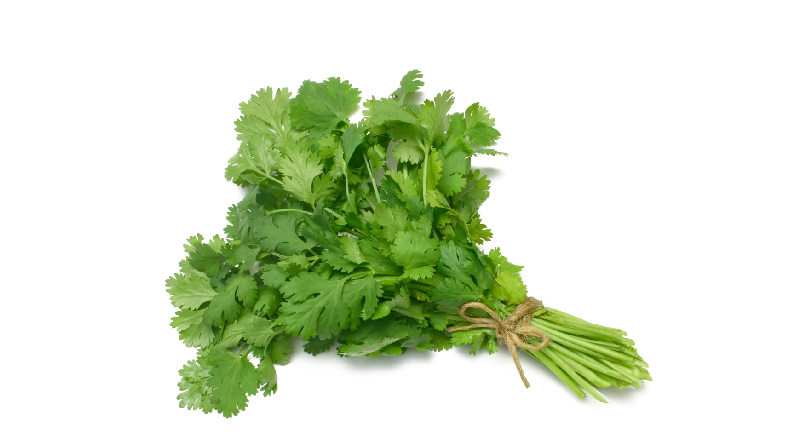The leaves of the coriander plant, or cilantro, are a vibrant green herb that is widely used in cooking. You’ll find it frequently in Asian, Mexican, and Middle Eastern cuisines.
Cilantro is commonly used as a seasoning because of its potential health benefits and its flavour, which is described as citrusy and peppery.
What it is, how to prepare it, and why some people just can’t stand the taste of cilantro are all covered here.
Advantages of Cilantro
While there isn’t a tonne of data on the health benefits of cilantro, there is some.
Nutrient-Dense and Delicious
Cilantro is a great way to jazz up your meal and increase its nutritional value. To get 16% of your daily vitamin K needs met, eat a quarter cup of raw cilantro leaves (about the size of a golf ball). According to their research, vitamin K promotes bone health in humans.
Plus, the vitamin A and C in cilantro add up to 5% and 2% of your daily needs, respectively. The proper functioning of the immune system depends on those vitamins.
Includes Antioxidants
The review article published in 2022 in the journal Molecules found that cilantro not only contains vitamin-like compounds, but also important compounds known as antioxidants. Antioxidants are chemicals that can stop or slow down the damage that free radicals cause to cells.
Although cilantro contains many different types of antioxidants, the polyphenols are especially noteworthy. Why? Food and Function published a review in 2019 discussing the antioxidant properties of polyphenols and their potential role in lowering inflammation. If polyphenols are effective, they could delay ageing and reduce the risk of chronic diseases by preventing cell damage.
Positively Impacts Heart Health

Plant parts from the coriander plant (such as cilantro leaves) have been used for centuries in traditional medicine to treat a wide range of ailments, including pain, inflammation, gastrointestinal issues, and more.
The 2022 Molecules review noted that while most of the plant’s medicinal properties are unknown, the herb may have positive effects on heart health. The high antioxidant content of cilantro suggests it may be useful for controlling blood pressure and irregular heartbeat. Only two of the 18 studies looked at in the review involved human participants. Therefore, eating cilantro won’t help your heart problems. Since November of 2022, a lot more study is required.
Cilantro’s Possible Downsides
To sum up, cilantro has few drawbacks, especially when considering its nutritional value. Still, cilantro may not be for everyone. A 2012 study published in the journal Flavour, for instance, found that, depending on the population, anywhere from two percent to twenty-one percent of people dislike cilantro.
Nutrients published a review in 2019 that speculated that heightened sensitivity to the odour of an aldehyde compound found in cilantro could be the result of a genetic variant, or a permanent change to one’s DNA.
The fresh, citrusy herb can take on a soapy or earthy flavour if that genetic variant is present, as smell and taste are intertwined. Because of its popularity in raw dishes, cilantro is often contaminated with bacteria that would be eliminated by cooking.
Consult your doctor about whether or not you should cook cilantro if you have a higher risk of developing a more severe illness due to foodborne bacteria. The Centers for Disease Control and Prevention report that pregnant women, the elderly, and those with compromised immune systems are at increased risk.
Prepare Cilantro for Use
To increase your daily intake of antioxidants and vitamins, try using raw cilantro as a garnish. Put some on your guacamole, your salad, your beans, your stir-fry, your soup, your fish, your curry, anything!
Go online to find recipes for pico de gallo, pesto, chutney, and drinks that feature cilantro, even if you don’t like it in its raw form. Incorporate chopped cilantro and fresh lime juice into your next serving of roasted corn. The key is to play around with different amounts and types of cilantro to see what works best for you.






Leave a Reply